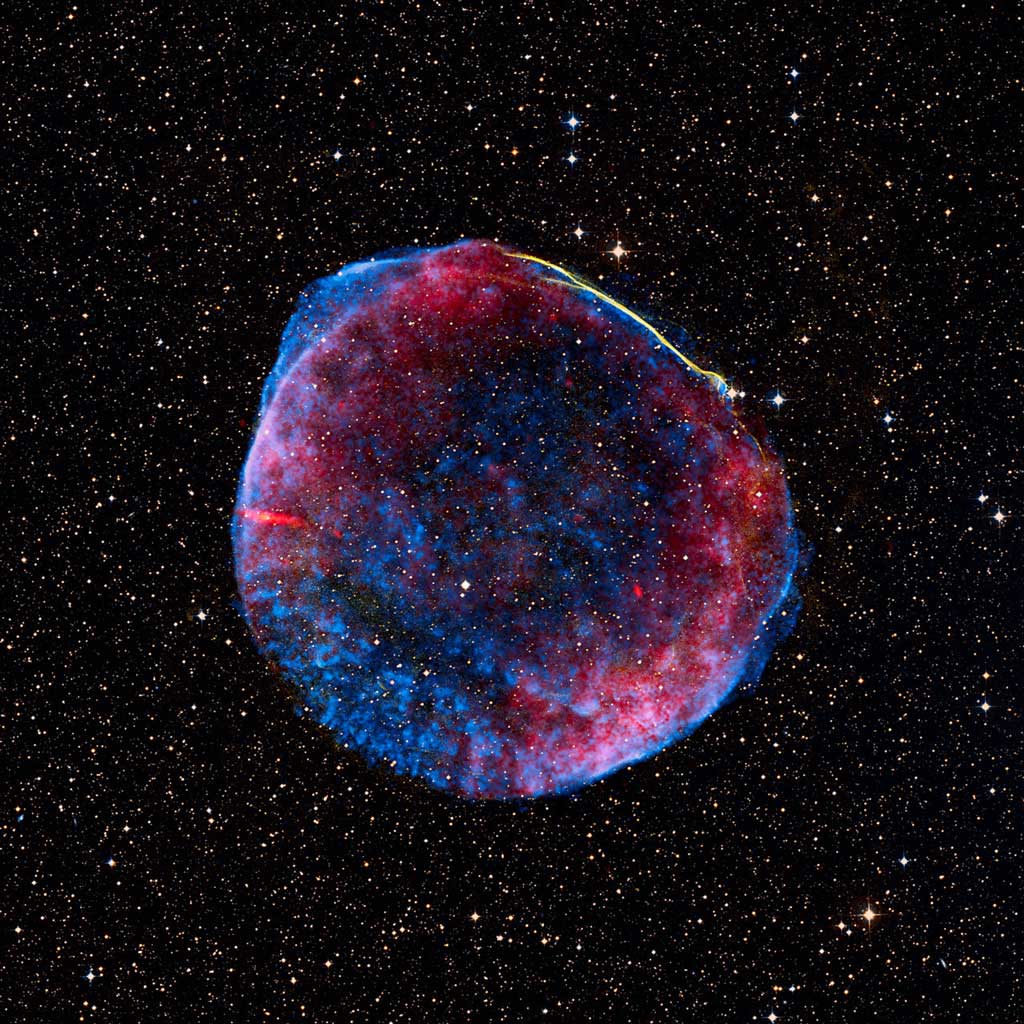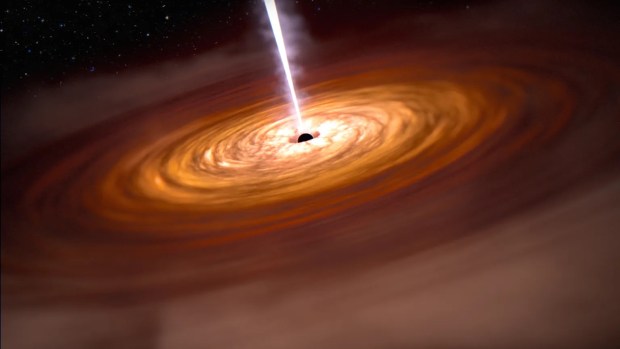In 1006, a new star was seen in the southern skies and widely recorded around the world. It was many times brighter than the planet Venus and may even have rivaled the brightness of the Moon. It was so bright at maximum that it cast shadows, and it was visible during the day. More recently, astronomers have identified the site of this supernova and named it SN 1006. They also have found a glowing and expanding ring of material in the southern constellation Lupus the Wolf that constitutes the remains of the vast explosion.
It has long been suspected that such supernova remnants also may be where some cosmic rays — high-energy particles originating outside the solar system and traveling at close to the speed of light — are formed. But until now, the details of how this might happen have been a long-standing mystery.
Related: “Fermi proves supernova remnants produce cosmic rays“
A team of astronomers led by Sladjana Nikolic from the Max Planck Institute for Astronomy in Heidelberg, Germany, has now used the VIsible Multi-Object Spectograph (VIMOS) instrument on the VLT to look at the 1,000-year-old SN 1006 remnant in more detail than ever before. They wanted to study what is happening where high-speed material ejected by the supernova is plowing into the stationary interstellar matter — the shock front. This expanding high-velocity shock front is similar to the sonic boom produced by an aircraft going supersonic and is a natural candidate for a cosmic particle accelerator.
For the first time, the team has not just obtained information about the shock material at one point, but also built up a map of the properties of the gas and how these properties change across the shock front. This has provided vital clues to the mystery.
The results were a surprise: They suggest that there were many rapidly moving protons in the gas in the shock region. While these are not the sought-for high-energy cosmic rays themselves, they could be the necessary “seed particles,” which then go on to interact with the shock front material to reach the extremely high energies required and fly off into space as cosmic rays.
“This is the first time we were able to take a detailed look at what is happening in and around a supernova shock front,” said Nikolic. “We found evidence that there is a region that is being heated in just the way one would expect if there were protons carrying away energy from directly behind the shock front.”
The study was the first to use an integral field spectrograph to probe the properties of the shock fronts of supernova remnants in such detail. The team now wants to apply this method to other remnants.
“This kind of novel observational approach could well be the key to solving the puzzle of how cosmic rays are produced in supernova remnants,” said Glenn van de Ven of the Max Planck Institute for Astronomy.










